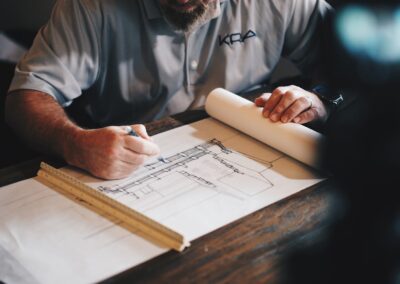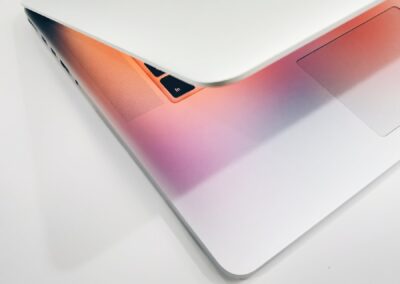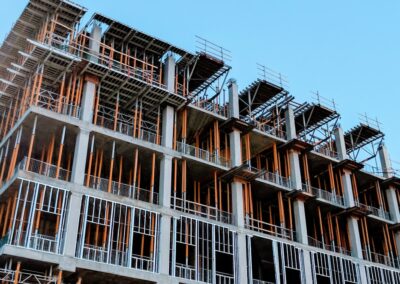Leveraging BIM and Digital Twins for Smart Building Development
Introduction to BIM and Digital Twins in Construction
Building Information Modeling (BIM) and digital twins are revolutionizing the construction industry, particularly in the development of smart buildings and intelligent infrastructure. BIM is a digital representation of the physical and functional characteristics of a facility, providing a comprehensive model that supports decision-making throughout the project lifecycle. When integrated with digital twins, which are real-time, data-driven replicas of physical assets, the synergy between these technologies can significantly enhance the efficiency and effectiveness of construction projects.
In rapidly developing regions such as Saudi Arabia and the UAE, cities like Riyadh and Dubai are leading the way in adopting advanced construction technologies. The integration of BIM with digital twins enables these cities to develop smart buildings that are not only energy-efficient and sustainable but also highly functional and adaptive to the needs of their occupants. This approach aligns with the vision of these cities to become global hubs of innovation and technology.
The combination of BIM and digital twins allows for detailed visualization and simulation of building performance, enabling project managers to anticipate potential issues and optimize building operations. By leveraging real-time data, stakeholders can make informed decisions that enhance the overall functionality and user experience of buildings. This integration also supports the development of intelligent infrastructure, which is essential for the creation of smart cities.
Enhancing Project Management with Integrated Technologies
The integration of BIM with digital twins provides a robust framework for project management, enabling construction professionals to manage complex projects more effectively. One of the key benefits of this integration is the ability to create a single, comprehensive source of truth for all project data. This unified approach enhances collaboration among stakeholders, reduces errors, and streamlines communication, ultimately leading to more successful project outcomes.
In cities like Riyadh and Dubai, where large-scale construction projects are common, the ability to manage projects efficiently is crucial. The integration of BIM and digital twins facilitates real-time monitoring and control of construction activities, allowing project managers to track progress, identify deviations, and implement corrective actions promptly. This proactive approach helps ensure that projects are completed on time and within budget.
Moreover, the use of BIM and digital twins supports predictive analytics, which can forecast future building performance and maintenance needs. This predictive capability is particularly valuable in regions with harsh environmental conditions, such as the deserts of Saudi Arabia and the UAE. By anticipating potential issues, project managers can develop preventive maintenance strategies that extend the lifespan of buildings and reduce operational costs.
Case Studies and Future Prospects of BIM and Digital Twins
Several case studies highlight the successful implementation of BIM and digital twins in the development of smart buildings and intelligent infrastructure. For instance, a major construction project in Dubai utilized BIM and digital twins to optimize building design and operations. The integration of these technologies provided real-time insights into building performance, enabling the project team to make data-driven decisions that improved energy efficiency and occupant comfort.
Similarly, in Riyadh, BIM and digital twins were employed in the construction of a state-of-the-art commercial complex. The comprehensive digital models allowed for detailed simulation of building systems, resulting in optimized HVAC performance and reduced energy consumption. The project also benefited from enhanced collaboration among stakeholders, leading to more efficient project execution and improved overall quality.
Looking ahead, the future prospects of integrating BIM with digital twins in construction are promising. As technology continues to evolve, these tools will become even more sophisticated, incorporating advanced features such as AI-driven analytics and IoT-enabled sensors. These advancements will further enhance the ability of BIM and digital twins to provide real-time insights and support data-driven decision-making.
In conclusion, the integration of BIM with digital twins is transforming the construction industry by enabling the development of smart buildings and intelligent infrastructure. By leveraging real-time data and advanced analytics, these technologies support efficient project management, enhance building performance, and contribute to the creation of sustainable and resilient urban environments. As regions like Saudi Arabia and the UAE continue to embrace and advance these technologies, the future of construction looks increasingly innovative and successful.
—
#BIM #DigitalTwins #SmartBuildings #IntelligentInfrastructure #ConstructionTechnology #ProjectManagement #SaudiArabia #UAE #Riyadh #Dubai #ArtificialIntelligence #Blockchain #Metaverse #ExecutiveCoaching #GenerativeAI #ModernTechnology #BusinessSuccess #Leadership #ManagementSkills























